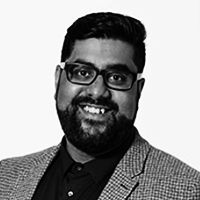Question
What are some examples of audiological issues that would make a person a good candidate for a bone anchored hearing system?
Answer
There are two main bone anchored hearing system (BAHS) candidacy indication categories, and one secondary indication category. Audiologically speaking, patients can be fitted with a Ponto system if they have conductive and mixed hearing losses, or if they have a unilateral profound hearing loss, also known as single-sided deafness (SSD). The secondary indication category includes patients who have other physical characteristics or other medical conditions that make wearing a conventional hearing aid impossible.
Patients who have conductive or mixed losses associated with any of the following conditions may be candidates for a bone anchored device:
- Otitis media with effusion (OME)
- Chronic otitis media
- Aural atresia/Microtia
- Otosclerosis
- Traumatic injury to middle ear structures
- Ossicular disease
- Cholesteatoma
Here is some additional information on the first three conditions.
Otitis media with effusion. When we talk about bone anchored hearing systems, we often refer to abutment level devices; however, it is possible to use a bone anchored device temporarily via a soft band (an elastic band around the head). The soft band can be very useful with the condition known as otitis media with effusion (OME). In most cases, OME is a transient disease, affecting mainly children. Most children recover spontaneously or with surgical treatment (grommet insertion). However, in some patients, OME can be a fluctuating, semi-chronic condition (e.g., in those with Down Syndrome or cleft palate). If OME is treated with a traditional BTE hearing aid, the hearing aid would need to be constantly refitted as the hearing fluctuates. If this condition were to be treated with a bone conduction device, it would clearly and directly stimulate the cochlea, with no refittings necessary.
Chronic otitis media. Chronic otitis media is a long-standing, persistently draining condition. It may involve perforation of the eardrum. In patients with chronic otitis media, BTEs with occluding earmolds are contraindicated, as they may have an adverse effect on ear discharge (because air isn't getting to the ear, it can exacerbate the infection). Left untreated, chronic ear discharge may lead to cochlear damage (Papp, Rezes, Jókay & Sziklai, 2003). While BTEs are not a safe choice, percutaneous BAHS can be used with favorable outcomes (Snik et al., 2005). Literature has shown that replacing BTEs with BCDs had a significant positive effect on ear discharge (Macnamara et al., 1996; Mylanus et al., 1998; McDermott et al., 2002). The observed reduction of infections resulted in fewer outpatient visits -- an important consideration for patients, in terms of convenience, and for hospitals, in terms of cost benefit of treatment (Hol et al., 2004).
Aural atresia/Microtia. A systematic review of over 107 papers related to aural atresia was in published the Journal Otology and Neurotology (Nadaraja, Gurgel, Kim & Chang, 2013). Patients with aural atresia/microtia are ideal candidates for a BAHS device. Some of these patients can undergo surgery for repair. To define a successful outcome after atresia repair, a rather broad criterion is used. If the remaining air bone gap is 30 dB or less, the outcome is considered as sufficient. A meta-analysis of six different studies showed that only 57% of patients fulfilled this criterion one year post-op (Nadaraja, Gurgel, Kim & Chang, 2013). Thus, many patients may still need amplification post-surgery (Evans & Kazahaya, 2007). Another analysis by Nadaraja and colleagues found that atresia patients who are fitted with BAHS require fewer follow up visits and have fewer complications after surgery. Again, this proves to be a more cost effective measure, due to a reduction in booked appointments. Additionally, it's much better for the patient outcome.
This Ask the Expert is an excerpt from the CE Course, Bone Anchored Hearing Systems - Principles and Candidacy.
References
Evans, A. K., & Kazahaya, K. (2007). Canal atresia:“surgery or implantable hearing devices? The expert's question is revisited”. International Journal of Pediatric Otorhinolaryngology, 71(3), 367-374.
Hol, M. K., Spath, M. A., Krabbe, P. F., van der Pouw, C. T., Snik, A. F., Cremers, C. W., & Mylanus, E. A. (2004). The bone-anchored hearing aid: quality-of-life assessment. Archives of Otolaryngology–Head & Neck Surgery, 130(4), 394-399.
Macnamara, M., Phillips, D., & Proops, D. W. (1996). The bone anchored hearing aid (BAHA) in chronic suppurative otitis media (CSOM). The Journal of Laryngology & Otology, 110(21), 38-40.
McDermott, A. L., Dutt, S. N., Reid, A. P., & Proops, D. W. (2002). An intra-individual comparison of the previous conventional hearing aid with the bone-anchored hearing aid: The Nijmegen group questionnaire. The Journal of Laryngology & Otology, 116(S28), 15-19.
Mylanus, E. A., van der Pouw, K. C., Snik, A. F., & Cremers, C. W. (1998). Intraindividual comparison of the bone-anchored hearing aid and air-conduction hearing aids. Archives of Otolaryngology–Head & Neck Surgery, 124(3), 271-276.
Nadaraja, G. S., Gurgel, R. K., Kim, J., & Chang, K. W. (2013). Hearing outcomes of atresia surgery versus osseointegrated bone conduction device in patients with congenital aural atresia: a systematic review. Otology & Neurotology, 34(8), 1394-1399.
Papp, Z., Rezes, S., Jókay, I., & Sziklai, I. (2003). Sensorineural hearing loss in chronic otitis media. Otology & neurotology, 24(2), 141-144.
Snik, F. M., Mylanus, E. A., Proops, D. W., Wolfaardt, J. F., Hodgetts, W. E., Somers, T., ... & Tjellström, A. (2005). Consensus statements on the BAHA system: where do we stand at present?. Annals of Otology, Rhinology & Laryngology, 114(12_suppl), 2-12.

